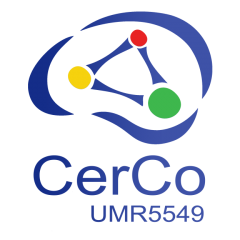Head: Timothée MASQUELIER
Our new team embodies the cross-pollination between Neuroscience and Artificial Intelligence (AI). We:
– employ state-of-the-art AI methods to effectively address outstanding neuroscience questions. For example deep learning tools are used to find patterns in vast amounts of fMRI and EEG data, and to relate them to stimuli, cognition, behavior and well being.
– use our knowledge of the brain to design improved AI algorithms and artificial neural network architectures, for example by incorporating spikes, feedback, oscillations, or more human-like representations.
Keywords
Artificial intelligence, machine learning, deep learning, neural networks, computational neuroscience, vision, audition, natural language processing.
Permanent research staff
Andrea ALAMIA
Timothée MASQUELIER
Rufin VANRULLEN
Thomas SERRE (Associated Member)
Post-Doctoral fellows
Amor BEN TANFOUS
Victor BOUTIN
Milad MOZAFARI
Doctoral students
Romain BIELAWSKI
Lina BONILLA
Cédric CANNARD
Mathieu CHALVIDAL
Bhavin CHOKSI
Colin DECOURT
Benjamin DEVILLERS
Isabelle HOXHA
Ismail KHALFAOUI
Furkan OZCELIK
Zhaoyang PANG
Gwenaelle SIDORSKI
Mohit VAISHNAV
Aimen ZERROUG
Representative publications
- Pellegrini, T., Zimmer, R., and Masquelier, T. (2021). Low-activity supervised convolutional spiking neural networks applied to speech commands recognition. In IEEE Spoken Language Technology Workshop
- Brandmeyer, T., Delorme, A. (2020) Closed-Loop Frontal Midlineθ Neurofeedback: A Novel Approach for Training Focused-Attention Meditation. Frontiers in Human Neuroscience, 14, DOI=10.3389/fnhum.2020.00246.
- Brandmeyer, T., Delorme A. (2020) Meditation and the wandering mind: a theoretical account of underlying and converging neural mechanisms. Perspectives on Psychological Science, doi: 10.1177/1745691620917340.
- Choksi, B., Mozafari, M., Biggs O’May, C., Ador, B., Alamia, A. & VanRullen. R. (2020). Brain-inspired predictive coding dynamics improve the robustness of deep neural networks. In 2nd NeurIPS Workshop on Shared Visual Representations in Human and Machine Intelligence (SVRHM)
- Kheradpisheh, S. R. and Masquelier, T. (2020). Temporal backpropagation for spiking neural networks with one spike per neuron. International Journal of Neural Systems, 30(06):2050027
- Cannard, C., Brandmeyer, T., Wahbeh, H., Delorme, A. (2020) Self-health monitoring and wearable technologies. In Handbook of Clinical Neurology, Nick Ramsey and Jose Millan (Editors). Elsevier: Amsterdam.
- Mozafari, M., Ganjtabesh, M., Nowzari-Dalini, A., Thorpe, S. J., and Masquelier, T. (2019). Bio-inspired digit recognition using reward-modulated spike-timing-dependent plasticity in deep convolutional networks. Pattern Recognition, 94:87–95
- Alamia, A., & VanRullen, R. (2019). Alpha oscillations and traveling waves: Signatures of predictive coding?. PLoS Biology, 17(10), e3000487.
- VanRullen, R., & Reddy, L. (2019). Reconstructing faces from fMRI patterns using deep generative neural networks. Communications biology, 2(1), 1-10.
- Delorme, A., Majumdar, A., Sivagnanam, S., Martinez-Cancino, R., Yoshimoto, K., Makeig, S. “The Open EEGLAB Portal.” 9th International IEEE/EMBS Neural Engineering Conference, San Francisco, March 2019.
- Pernet, C., Appelhoff, S., Flandin, G., Phillips, C., Delorme, A., Oostenveld, R. (2019) BIDS-EEG: an extension to the Brain Imaging Data Structure(BIDS) Specification for electroencephalography. Scientific Data volume 6, Article number: 103. doi.org/10.1038/s41597-019-0104-8.
- Delorme A., Brandmeyer T. (2018) When the meditating mind wanders, Current Opinion in Psychology. DOI: 10.1016/j.copsyc.2018.12.006.
